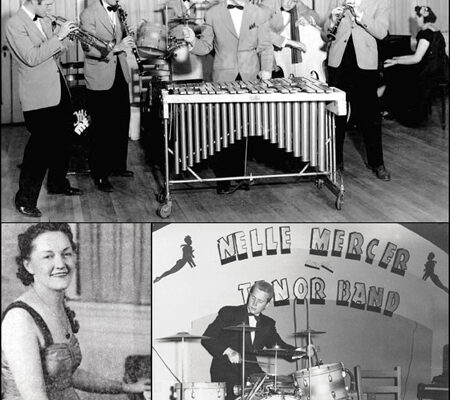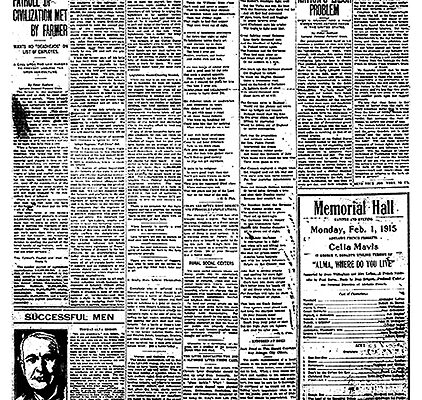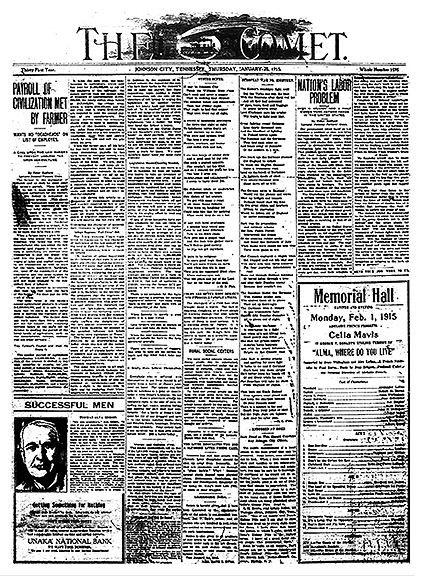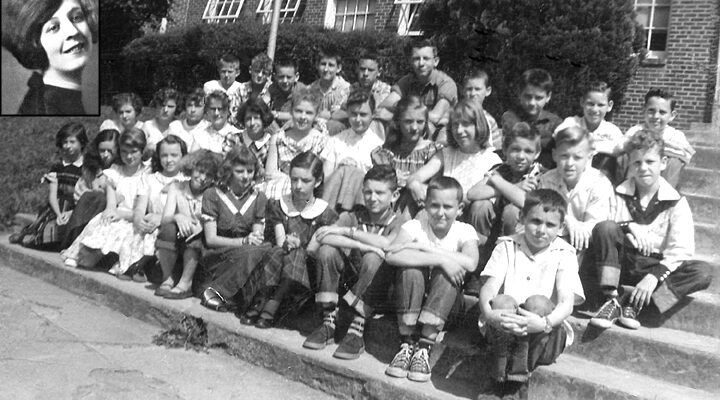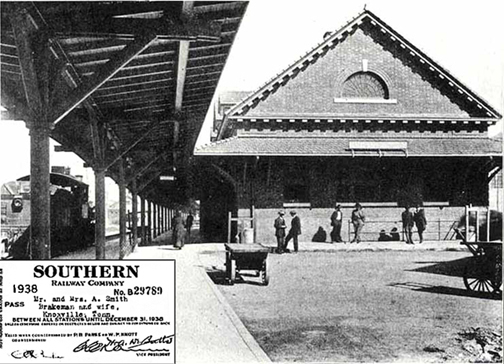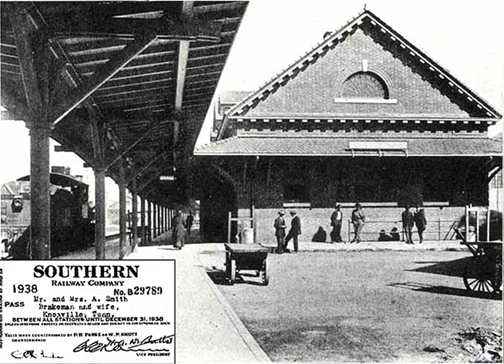Old timers will fondly recall the popular 11-piece Marion Mercer Band that featured the bandleader’s equally talented sister Nelle on piano. Debuting in the 1930s, this musical ensemble was the only major one in these parts until its success later spawned other groups. Marion Mercer could play a variety of instruments: trombone, vibraphone, violin, accordion, piano, organ and chimes.
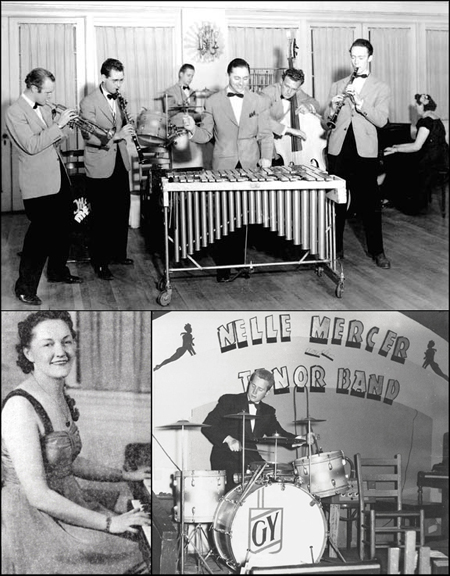
Top: Marion Mercer Band, Bottom: Nelle Mercer Band, Gene Young on Drums
In 1980, the late Press writer Dorothy Hamill interviewed Nelle. The bandleader showed the reporter a photo of her brother’s early band and identified band members. Duke Barron played saxophone and clarinet. Doc Welch, Tony Farris and Edwin Bowman played saxophone. Trumpeters included Dan Zoerb and Bill “Rocky” Stone. Park Johnson was on bass fiddle and Junior Campbell pounded the drums.
Because musicians had regular jobs then, they worked weekdays and performed on weekends. They were in heavy demand throughout East Tennessee and usually stayed booked most of the time. Aside from vocalist Frieda Ricker Rose, Nelle was the only female performer in the band. The gifted lady, who in private life was Mrs. Earl Dotson, could assume Marion’s bandleader responsibilities during his absence at a moment’s notice. Ms. Rose later became a receptionist for the Johnson City Press-Chronicle.
The three Mercer siblings, Marion, Nelle and Beulah, grew up in a musical family. When Nelle was about three years old, she stood on her tiptoes in order to reach the piano keys and plunk out tunes. At age 12, the youngster played piano for Unaka Avenue Baptist Church. Later, her mother would hold her on her lap and let her play.
When World War II broke out, Marion took a military hiatus and began serving his country as a member of the U.S. Army Special Services. Before departing, he turned over the reins of his band to Nelle. The new leader’s first order of business was to compose a theme song, “Study In Rhythm.” Doc Welsh served as arranger for every new piece that the group played. Nelle’s genre was primarily easy listening big band music – soft and sweet in the fullness and richness style of the Glenn Miller Band. Those were the days of the fox trot, Big Apple, waltz and jitterbug.
Jean Bowman Moore, who lived a block away on E. Myrtle Avenue, recalled going to Nelle’s residence at 515 E. Fairview when the bandleader and her band would practice their music on the porch and draw a sizable crowd of spectators on the steps, sidewalk and street below. Jean recalled that those were fun times.
During the war years, Nelle and her band purchased a bus and began traveling to distant gigs in Ohio, Michigan, Louisiana, Kentucky and West Virginia. About this same time, she saw the need for and hired a booking agent.
When the war ended, Nelle and Marion did not reunite, but instead led separate bands. By then, added competition came from others such as Vernon Weaver and Rocky Stone who formed their groups.
Patrons once asked Nelle to organize an all-girl band, but she could not locate enough qualified, available musicians to meet their request. The bandleader’s witty solution was to begin introducing her male band members with ladies names: Mabel (Doc Welsh), Agnes (Park Johnson) and Nanny (Marion Mercer, when he played with them). Not to miss out on the fun, Nelle acquired the name Butch.
Over time, other female vocalists performed with Nelle’s band, such as Lucille Young, Georgia Horne, Margaret Harrison, Ginger Dennis, Betsy Ross and Pat Archer.
In 1947, Nelle and Earl bought the Country Kitchen in 1947. It was located near the old structural steel bridge over the Watuaga River in the Austin Springs community.
In 1956, Marion moved to Crystal Springs, Florida where he remained active in the music entertainment business by forming a new band, which he called the Marion Mercer Trio. He was active there for many years playing at local venues.
The musician opened the first Radio Shack in that area and became the owner of Mercer Music Store in three nearby cities. Many people knew him through his music at the Port Paradise, Plantation Club, Yardarm, Holiday Inn, Citrus Hills and Seven Rivers Golf and Country Club. He passed away in March 2000.
Nelle’s group later became known as the Nelle Mercer Tenor Band, consisting of tenor saxophones, trumpets and drums. Band personnel were Robert Moore, Tony Farris, Gene Proffitt, Charlie Showalter, Gene Young (drums), Rex S. Rowe, Daley Fine, Clay Slagle, Joe Morrell, Al Bryan, Mac Blackwell, Joe Henley (trumpet) and 13-year old singer Pat Holden.
The Country Kitchen was apparently a successful business enterprise for the Dotsons because they operated it for 21 years until they closed it in 1968. The building stood vacant for many years as a drive by tribute to its big-band heyday era before it became dilapidated and was finally razed.
Although Nelle quit playing professionally, she never abandoned the music she loved. At her home on Austin Springs Road, she owned two organs and a piano and played them with gusto. Since she and Beulah composed numerous songs during their lives – gospel, sentimental and ballads – they ushered in their senior years by getting together frequently and harmonizing their tunes.
Although the three Mercer performers have long passed from the scene, their popular music added rays of sunshine to people’s lives, making them smile at a time when the world’s war situation greatly saddened them.
